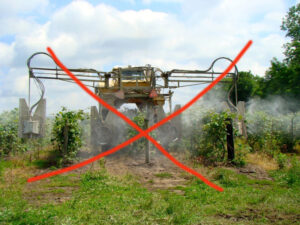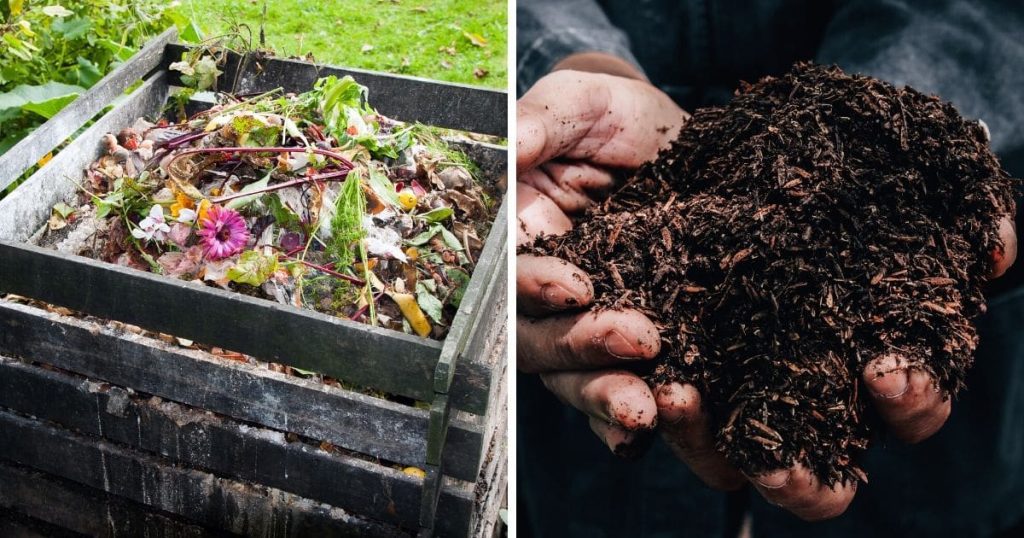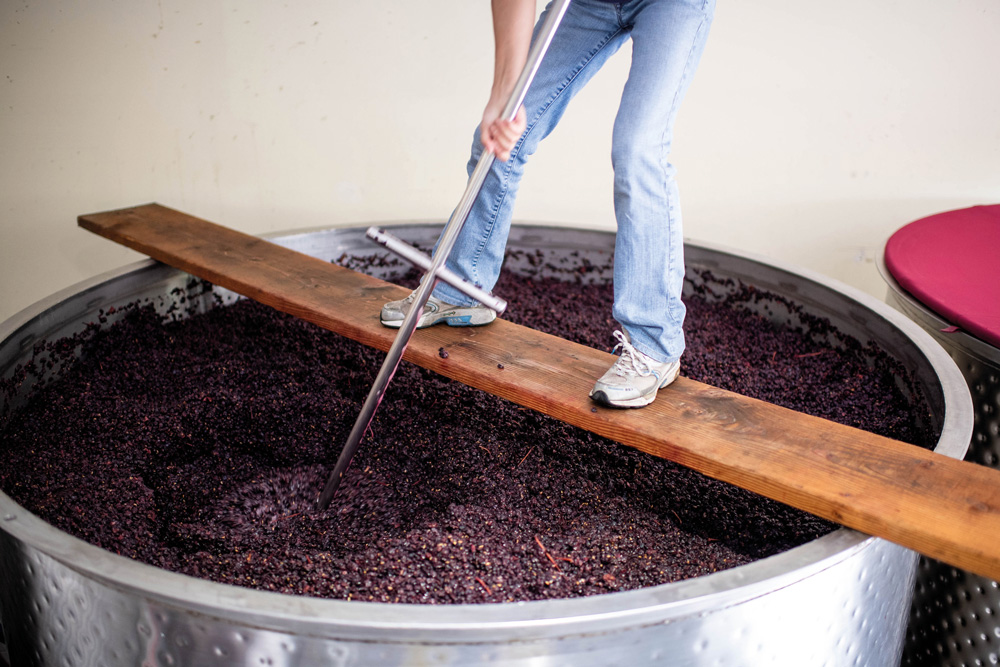Sustainable organic production
Organic agriculture is a system of systainable agricultural management based on the principles of Health, Ecology, Fairness and Care.

The Principle of Health.
Organic Agriculture should sustain and enhance the health of soil, plant, animal, human and planet as one and indivisible.

The Principle of Ecology
Organic Agriculture should be based on living ecological systems and cycles, work with them, emulate them and help sustain them.

The Principle of Fairness
Organic Agriculture should build on relationships that ensure fairness with regard to the common environment and life opportunities.

The Principle of Care
Organic Agriculture should be managed in a precautionary and responsible manner to protect the health and well being of current and future generations and the environment
How we do it in Plavinci vineyards
No chemical sprays
We use varieties that are partially resistant to main grape diseases and maintain airy canopy, so we don’t need to use any fungicides, pesticides or insecticides. We use only microbiological preparations that enhance natural grapevine immunity.

No synthetic fertilizers

No-till soil management
Our vineyards have a living green cover year around. We don’t plow, disk or otherwise disturb the soil between the rows. Our light-weight tractor terminates tall cover crops once a year and we mow three times a year. Our soil is alive, full of mycorrhiza and other beneficial fungus and bacteria.

How we make wine
There are two rules for making quality organic wines:
- Rule 1: Grapes must be perfectly healthy;
- Rule 2: If wine is not good, read Rule 1.
What we are trying to say is that unlike in the conventional winemaking, where you have 59 different chemicals that can help you make good wine regardless of the grape quality (see here), there is very little we can do in the cellar. This why this type of winemaking is also called low-intervention or natural. We can control the yield in the vineyard, the time of harvest, the length of maceration, the temperature of the fermentation, the length of maturation and whether to clarify and filter or not. All without chemicals.
At Plavinci, grapes are harvested by hand at their full phenolic ripeness – we wait until pits are completely dark and crunchy when bitten. This results in different level of sugar and acidity every year and wine that ranges from 12,5% to 14,5% alcohol. This can’t be corrected in the winery so if you want to make wine with less alcohol you must harvest before full phenolic maturity. This, in turn, produces different aromatic profile of your wine with some aromas that you may not really want to have. It takes substantial theoretical knowledge and years of practice to know the right time to harvest.
We ferment grapes in open tanks on wild yeast that comes on the grapes. Unlike pre-packaged selected yeast that contains only one strain, wild yeast is composed of hundreds of strains, each contributing to the richness of aromas and tastes of the finished wine. But since the combination of yeasts is different every year, due to different weather conditions during grape maturation, wine produced by wild yeast will have different predominant aromas every year.

For wine maturation we employ a technique called sur lies or “on the sediment”. Wine stays in the same tank the whole time and is frequently stirred to redistribute the sediment throughout the volume. The sediment enhances extraction and increases mouthfeel while protecting the wine from spoilage. Only at the end of maturation, determined by the winemaker by tasting the wine, wine is left to naturally settle and clear before bottling. Sulfur is the only additive in the entire winemaking process, added at bottling. Law allows organic wines to have 0,15 g of sulfur per liter, while ours typically contain 0,002 i 0,003 g/l. This is enough to protect the wine against oxidation, but low enough to allow wine to continue developing inside the bottle for many years.
CO2 neutralilty

In 2019 we started a project intended to lead to carbon neutrality of Plavinci winery by 2025. This goal appeared achievable given our sustainable practices from the beginning. Due to two years of COVID restrictions it now appears the goal will not be achieved before 2030.
